Don’t you think it’s weird that most “marketing secrets” these days are just… common sense?
It’s extremely rare that you stumble upon PPC secrets that are actually secrets.
Most of the PPC “secrets” out there are already known and widely adopted—that makes them quite the opposite of secrets.
In this article, I want to let you in on five actual PPC management secrets.
These are extremely actionable tactics that work universally well for campaign managers in all verticals across lead gen, SaaS, and eCommerce.
And the best part? These really are secrets, because very few marketers know about them.
And we’re going to share them with you.
Let’s get started.
Get brand new PPC strategies straight to your inbox every week. 23,739 people already are!
1. The Iceberg Effect
On keyword-based PPC platforms, knowing which keywords and ads are responsible for your conversions is pretty simple if you have accurate conversion tracking set up.
But what happens when your keywords aren’t really the things that are getting you conversions?
Here’s the first secret: it’s your search terms that are getting you conversions, not your keywords.
What’s more, there’s a very big chance that you have a humongous keyword-to-search query discrepancy that’s slowly bleeding your PPC account dry.
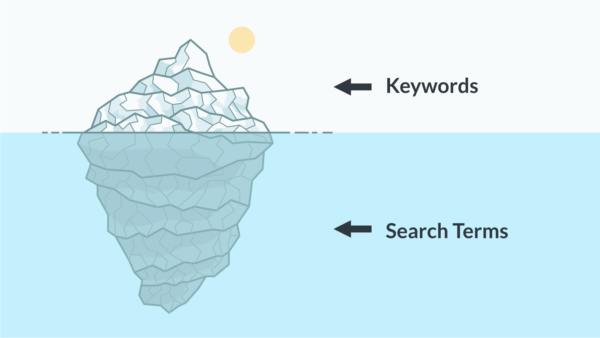
If you look inside your Google Ads Search Network campaign today, I'll 100% guarantee that you have more search terms than keywords.
Your keywords are what you control and what you’re bidding on. But the search terms are what users are actually searching for (queries that were close enough to your keyword to trigger your ad to show on the Google search engine). Your search terms are actually what you’re paying for.
This means that one single keyword out of the potential hundreds (or more) you’re bidding on could easily have hundreds of related search terms.
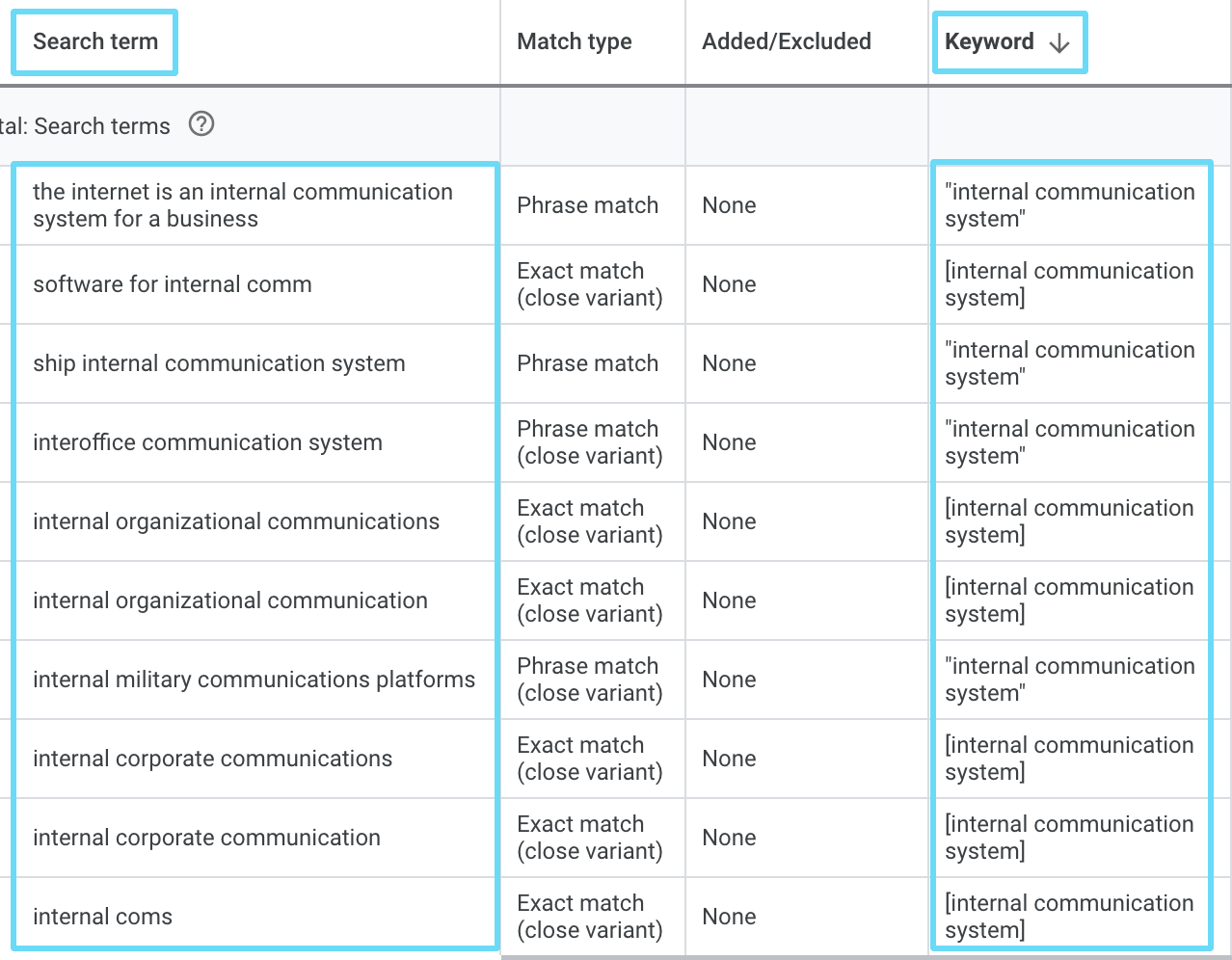
When you begin lowering your search term-to-keyword discrepancy through methods like single keyword ad groups (SKAGs) and negative keywords, you regain more control. From there, you can improve your cost per acquisition (CPA) and many of the other metrics you track in your Google Ads or Microsoft Ads (formerly Bing Ads) campaigns.
Beyond search: "iceberg-ing" other PPC platforms
The Iceberg Effect doesn’t just happen within your Search Network campaigns.
It happens on the Display Network, too, when your automatic placements outnumber your targeted placements.
The Iceberg Effect appears again when your Facebook interests are grouped together to create a bigger target audience size, because you lose the ability to break down the individual interest performance.
So how do you steer clear of the Iceberg Effect?
It’s simple:
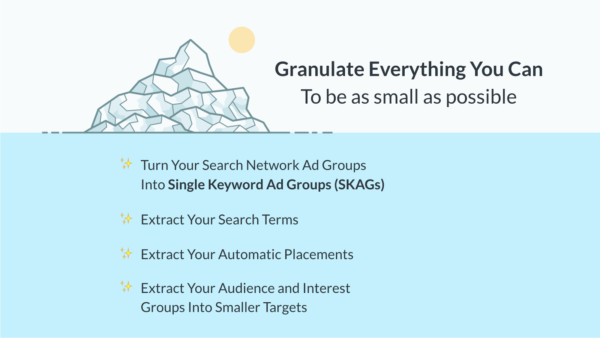
2. PPC traffic temperatures
If you’ve had success with PPC marketing so far, there’s a good chance that you started by placing text ads on the Google Ads (formerly Google AdWords) Search Network.
So now, like any ambitious business owner, you want to see if you could expand and take advantage of other PPC channels, like the Display Network or Facebook.
So you do what any logical person would do. You take the call-to-action (CTA) that worked fabulously on the Search Network and replicate it everywhere else.
And then... that fails miserably.
Even though your cost-per-click might be cheaper on the Display Network or on social media platforms, you hardly get any conversions. Or if you do, they’re pretty bad quality.
Sounds familiar, right?
That has to do with a very simple principle known as “PPC traffic temperature.”
The "Ice Cube & Lava Scale"
In simple terms, you need to follow the “PPC Intent & Threat Scale” when deciding on the offer to show your audience. We prefer to call this the “Ice Cube & Lava Scale”:

What this scale shows is that if your traffic is colder, your offer's threat level has to match and also be lower if you want conversions.
You can replicate this logic across other types of PPC channels like display, video, social, and search.

Applying the scale
To make this easier, we've compiled the different types of offers that we’ve been using for our clients. The breakdown of conversion success related to calls-to-action looks pretty much like this:

There’s one very important thing to keep in mind, however. If you don’t have a plan to take a display visitor from a cold offer to a warm offer, then all your work will be for nothing.
Your retargeting and email nurturing needs to bridge the gap from one stage of your marketing funnel to the next so that you can convert users (and, y'know, make money).
3. The importance of micro conversions
Alright, so maybe you’re already well on your way to implementing those first two PPC secrets.
You’re running new PPC campaigns across different channels and networks, but you’re still not getting the conversions volumes you were expecting.
If that’s the case, there’s a good chance that your execution is just off. So now it’s time to find out where your bottlenecks are.
See, before users can complete a macro conversion (the end goal you want to take place), many micro conversions need to take place.
Most of the time these micro conversions are linear in nature, so it's easy for you to locate, diagnose, and fix the issue.
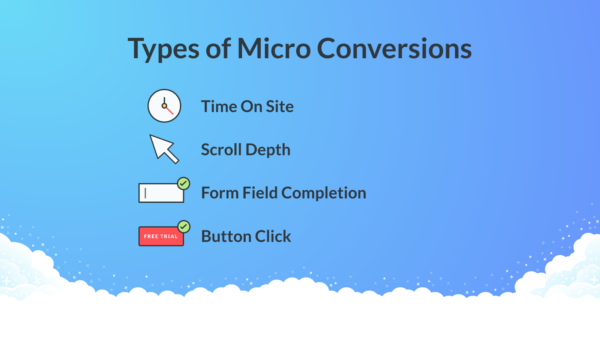
Tracking micro conversions to improve your conversion path
If you’re in lead generation or SaaS and use lead capture forms on your landing pages, then you’re probably familiar with the steps a visitor takes before the macro conversion happens.
When you’re tracking your micro conversions, you can quickly see that it might not be the landing page that has a problem. It could be the ads, the visitors you’re attracting, or even the order of your form fields.
For example, take a look at the difference in the average session duration between these three Google Ads campaigns. One is 114 seconds, one is 62 seconds, and the last is just 12 seconds.
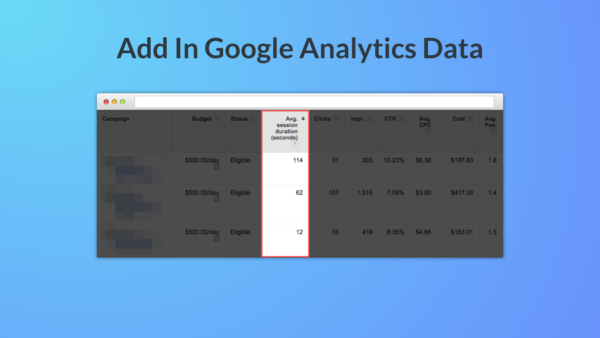
The cool thing is that you can track this “time on site” micro conversion through Google Analytics. You can even break down your metrics at the campaign, ad group, and keyword level.
In addition, you can use tools like Hotjar to track form field dwell times (how many seconds it takes for one person to fill out one field on your form) and re-fill rates. You can also use Crazy Egg to analyze heatmaps at the PPC channel level.
Using this data, you can better see which obstacles are standing in the way of a smooth micro conversion path toward your macro conversion.
4. Optimize for sales, not conversions
Let’s say that you’ve started taking the Iceberg Effect seriously and you create Single Keyword Ad Groups at scale.
You’re seeing improvements in click-through rate (CTR), Quality Scores, and cost-per-click (CPC).
Time to go one step further…
Let’s say that a conversion on your landing page is not black and white like an eCommerce purchase. Let’s say that you’re generating leads that you hope will lead to sales of your service.
You now know which keywords and search terms are producing conversions, but do you know which ones are producing sales?
Conversion comparisons: see the whole picture
Take a common example of someone who has set up PPC conversion tracking. All things being equal, which keyword is performing better?

But this is just a fraction of the whole picture.
How do these two keywords perform when it comes to generating sales (e.g., a lead closed or a sale over the phone)?
Let’s add in some sales tracking data that’s coming from your CRM. Now which keyword is performing best?

In other words? It’s time you stopped focusing your keywords around a common account CPA goal.
Look at your keywords from a post-lead cost per sale or ROAS perspective, and you’ll know exactly what keywords stand to make you the most money, not just the most leads.
Scale up your bids for warmer leads
Once you pair your lead data with your sales data, you’ll be able to be more aggressive with certain bids on PPC traffic with a higher likelihood of leading to sales.
To track which elements (like keywords or ad sets) your actual sales are coming from, you’ll want two things:
- URL parameter tracking
- hidden fields
The URL parameters can either be done manually through UTM parameters, or automatically through ValueTrack parameters.
Then, the “hidden fields” are what you add to the lead form on your site so it can capture the data that’s in the URL parameters when a visitor converts.
With all this data flowing, you’ll be able to identify which terms are actually most important to raise bids on (AKA, the ones that make you moolah 🤑).
One last secret within a secret to optimize for sales
If you’re advertising with Google Ads paid search, you might be familiar with smart bidding strategies.
Smart bidding strategies are a form of automation that allows you to tell Google Ads you want it to optimize your bids for more conversions, higher ROAS, better conversion value, or lower CPA.
Now, if you’re collecting Google click IDs (GCLIDs) in your CRM (through the hidden fields method mentioned above), and you set up offline conversion tracking, you can actually pull your sales data back into Google Ads as an offline conversion, and link that data to its original click source in-platform.
Not only will this allow you to attribute where your sales came from within Google Ads, but it’ll also allow you to bid to get more of those offline sales, specifically.
You would do so by specifying in a campaign’s goal settings that you only want that campaign’s goal to be your offline sale conversion.

Then, the magic happens when you choose a bidding strategy like maximizing conversions. If your campaign’s goal is your offline sale conversion, your smart bidding strategy will now be optimizing bids to bring in more of that offline conversion.
It does this by looking for specific signals that indicate a searcher fits a similar profile to someone who submitted a lead and became a sale.
Pro tip: You’ll need enough historical offline conversions imported in so that your smart bidding strategy has ample data to learn from—this is when it functions at its best.
5. The Breadcrumb Technique
“The Breadcrumb Technique” is what we call using multi-step forms on PPC landing pages. More importantly, it’s the most effective tactic we’ve found for lead generation or SaaS marketing.
Conventional PPC wisdom says that you should ask for the bare minimum of visitor information when you’re trying to generate leads, trials, or demos.
But if you keep taking fields away, you’re left with the fields that intimidate visitors the most, in a form that usually looks like this:
Name*
Email*
Phone Number*
*required
If your form looks like this, then you’re ONLY asking for personal information, which most of us would rather NOT give out if we can help it.
So how do you preempt your visitors’ worries and get their information willingly? By adding more fields and steps...just in the right order.
The return of the threat level scale
Like the PPC traffic temperature discussion above, The Breadcrumb Technique starts with anonymous, low-threat questions to get a first “yes” from your visitor. You’ll have an easier time getting users to complete your form after that because they’ll feel compelled to finish what they’ve started.
Here’s an example from a SaaS company that was using a one-step pop-up form:
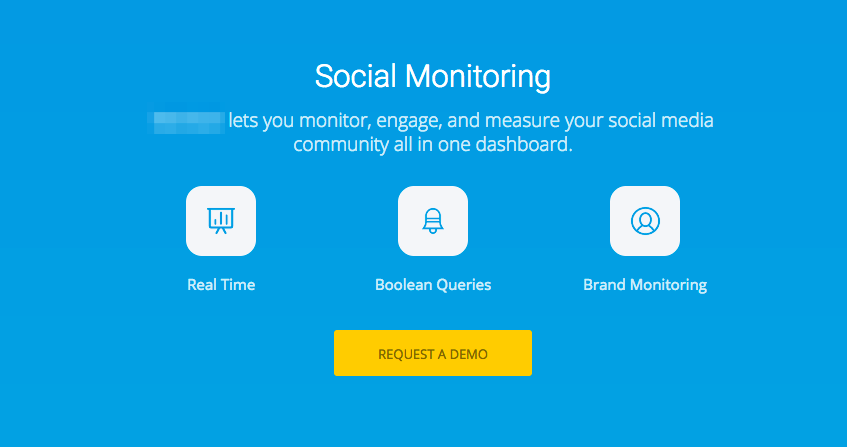
A bit intimidating, right?
So here’s what we did: we expanded the pop-up with some preliminary questions to create a micro conversion. (The questions didn't even matter to the sales team, we just needed that first “yes” before moving forward with the form.)
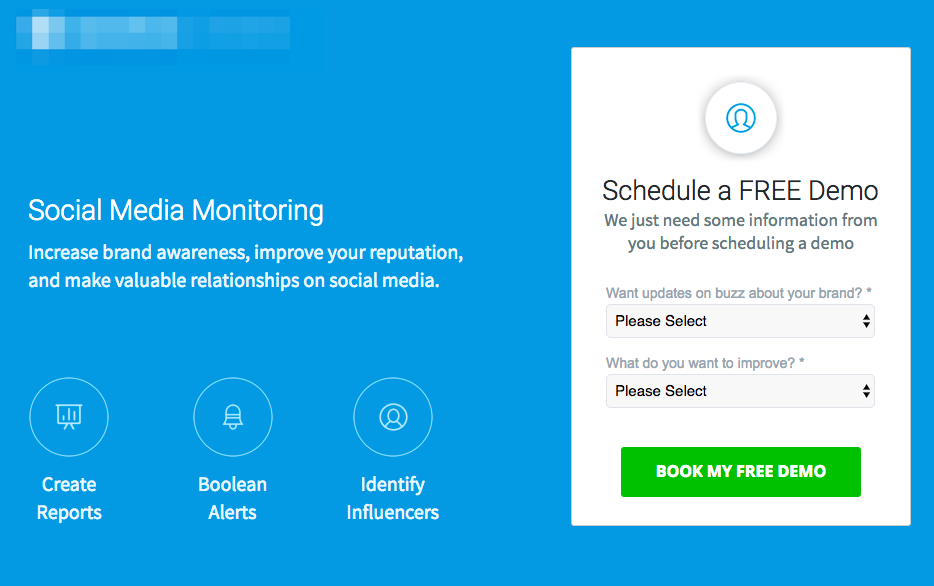
That simple change led to a 74% boost in conversion rate and a 51% drop in cost per acquisition (CPA).
Finally, keep in mind that the threat level of your CTA can impact the Breadcrumb Technique’s success on your landing page.
Pursuing a “big ask” like a quote or free consultation with the Breadcrumb Technique often works better than a “small ask” like a free eBook, webinar, or podcast download.
Take these PPC secrets, and run with them
We’re not going to stop you—after all, we shared these secrets with you so that you could take them and run.
Now that you’ve got a healthy pocketful of lesser-known tactics to use on your PPC campaigns, you’re more prepared to take the bigger steps toward PPC strategy success that so many other marketers aren’t willing to take or don’t even know about.
That gives you an edge. And in the digital marketing space, we could all use an edge.
Where do you go from here? Well, if you’re ready to make your PPC ads even stronger, then check out our next article on how to decrease your CPC to get more out of your ad spend.
